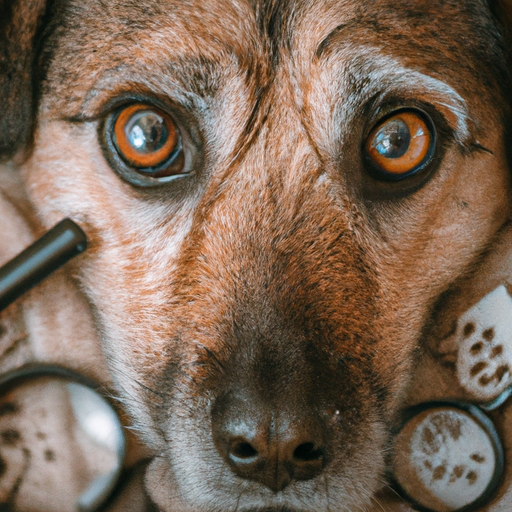Tears are something you might associate with emotion in humans, but when it comes to your furry friend, they may have an entirely different meaning. If you’re noticing your dog’s eyes tear more than usual, don’t panic. We’re here to help you understand the “why” behind this common canine issue.
Understanding Tear Production in Dogs
Just like humans, dogs produce tears to keep their eyes lubricated and healthy. But excessive tear production, or epiphora, can lead to tear-streaked fur and a very watery-eyed pup.
There are a few reasons why your dog might be producing more tears than usual:
- Allergies: Dogs can be allergic to everything from certain foods to household chemicals.
- Irritants: Smoke, dust, or even hair in the eyes can cause irritation and increased tear production.
- Eye conditions: Certain conditions like conjunctivitis (pink eye), corneal ulcers, or glaucoma can cause excessive tearing.
- Blocked tear ducts: Just like humans, dogs have tear ducts that can become blocked, causing tears to spill over.
Your dog’s breed may also play a role in tear production. Breeds with short noses, like bulldogs and pugs, often have more tear production due to their facial structure.
Symptoms of Excessive Tearing in Dogs
Recognizing the signs of excessive tearing in dogs is the first step towards helping your furry friend. Here are some common symptoms to look out for:
- Constantly wet fur around the eyes
- Red or brown staining around the eyes
- Frequent blinking or squinting
- Visible discomfort or pawing at the eyes
If your dog is showing any of these symptoms, it’s time to contact a veterinarian. They can conduct a thorough examination and determine the cause of your dog’s excessive tearing.
Treatment Options for Excessive Tearing in Dogs
The treatment for your dog’s excessive tearing will depend on the underlying cause:
- If allergies are to blame, your vet may recommend a change in diet or environment.
- For irritants, a simple solution might be to keep your home smoke-free and clean of dust.
- If your dog has a blocked tear duct, a vet can perform a procedure to open it.
- Eye conditions usually require specific treatments, such as medication or in severe cases, surgery.
Remember, each dog is unique, and what works for one may not work for another. It’s essential to consult with a veterinarian before starting any treatment.
Preventative Measures for Excessive Tearing in Dogs
While you can’t prevent all causes of excessive tearing in dogs, there are some steps you can take to keep your dog’s eyes healthy:
- Regularly clean your dog’s eyes to remove any dust or debris.
- Make sure your dog’s diet is balanced and nutritious.
- Avoid exposing your dog to smoke or other irritants.
- Regular vet check-ups can help catch any potential problems early.
Implementing these simple measures can go a long way in maintaining your dog’s eye health.
Frequently Asked Questions
Why does my dog have brown stains under his eyes?
The brown stains are likely a result of a compound called porphyrin found in your dog’s tears. When the tears dry, they leave behind this brownish-red pigment.
Can I use human eye drops on my dog?
No, you should never use human medication on your dog without consulting a vet. The medication may contain ingredients that are harmful to dogs.
Is excessive tearing painful for dogs?
It can be if it’s due to an underlying eye condition or irritation. If your dog is squinting or pawing at their eyes, it’s best to seek veterinary care.
How can I clean my dog’s eyes?
Use a warm, damp cloth to gently wipe your dog’s eyes. Be sure to avoid using anything that could irritate the eyes, like soaps or perfumed wipes.
Can I prevent my dog from having excessive tears?
While you can’t prevent all causes, regular cleaning, a healthy diet, and avoiding irritants can help maintain your dog’s eye health. Regular vet check-ups are also crucial.
In conclusion, while it can be concerning to see your dog’s eyes tear, understanding the causes, recognizing the symptoms, and knowing the treatment options can equip you to help your furry friend. Remember, when in doubt, always consult with a veterinarian.



